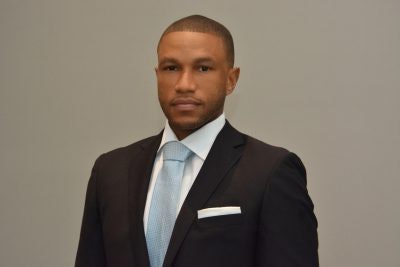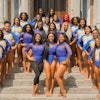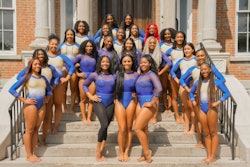The National Collegiate Athletic Association (NCAA) adoption of a new policy on July 1 that allowed players to be able to profit from their name, image, and likeness (NIL), has ushered in a new era for college athletics. It is an inflection point that will create a new paradigm that multiple stakeholders will have to adjust to. It represents a major deviation from a status quo that has been in place for generations. Players will now be able to cash in on the fame that the platform of college sports provides for the first time.
It is a monumental victory for the economic empowerment of student-athletes that removes the shackles that previously restricted players from being able to profit from their name, image, and likeness. It opens the possibility for life changing financial resources to go to families who may have been historically excluded from other wealth building opportunities. The overwhelming majority of student-athletes will not make it to the NBA, NFL, or other professional leagues. Their window to economically benefit from their athletic prowess expires when their college eligibility does. This is why the NIL ruling is incredibly important.
 Dr. Marcus Bright
Dr. Marcus BrightThe quick passage of this measure with little regulation and relatively vague instructions has left a lot of open room for how it will ultimately be implemented. The NCAA issued the following guidance:
- “Individuals can engage in NIL activities that are consistent with the law of the state where the school is located. Colleges and universities may be a resource for state law questions.
- College athletes who attend a school in a state without an NIL law can engage in this type of activity without violating NCAA rules related to name, image and likeness.
- Individuals can use a professional services provider for NIL activities.
- Student-athletes should report NIL activities consistent with state law or school and conference requirements to their school.”
The NCAA made a distinction between NIL and schools directly paying players by stating that “while opening name, image and likeness opportunities to student-athletes, the policy in all three divisions preserves the commitment to avoid pay-for-play and improper inducements tied to choosing to attend a particular school. Those rules remain in effect.”
Though it is not a formal pay for play situation, the opportunities for student-athletes and their families to financially benefit from this ruling are substantial. The term that I have previously used to describe the pursuit of sports stardom, “the athletic lottery”, has become even more relevant with this ruling and preceding declarations from the NCAA over the past year. There are many more eligible student-athletes competing for the same number of spots on college sports rosters with players being granted an additional year of eligibility and the one-time transfer rule being put in place. These spots also have much more lucrative potential now with the passage of the new NIL ruling.
This rule change from the NCAA comes on the heels of the Supreme Court ruling in the NCAA v. Alston case on June 21, 2021 that involved a group of current and former student-athletes “challenging the NCAA’s restrictions on compensation. Specifically, they alleged the NCAA’s rules violate the Sherman Act, which prohibits ‘contract(s), combination(s), or conspiracy(ies) in restraint of trade or commerce” according to the court’s ruling. Justice Brett Kavanaugh gave a blistering critique of the NCAA that could open up the floodgates for future lawsuits. Kavanaugh wrote that sports traditions “cannot justify the NCAA’s decision to build a massive money-raising enterprise on the backs of student-athletes who are not fairly compensated. Nowhere else in America can business get away with agreeing not to pay their workers a fair market rate…. The NCAA is not above the law.”
The momentum that was manufactured by college basketball players before the NCAA Tournament using the hashtag #NotNCAAProperty, and a set of NIL state policies that became effective on July 1 in Alabama, Florida, Georgia, Mississippi, New Mexico, and Texas also played pivotal roles in pushing the NCAA to make this new ruling.
While this policy change on NIL offers some new possibilities of benefits to accrue to student-athletes, it should be acknowledged that players have been able to benefit from their participation in college athletics in other ways. Many student-athletes have been afforded admission and financial aid coverage at a college or university that they would not otherwise have been able to attend. There are also those who have been able to utilize connections that they gained from participation in athletics to open doors of opportunity in other areas of life.
This new measure is not a one size fits all dynamic. There will be costs and casualties to go along with the benefits and opportunities. The right thing to do is not always the easiest thing to do. The implementation of NIL may be unregulated, uneven, and unequal. There will be a backlash and there will be drawbacks. Donors who may have contributed to athletic departments may opt to provide endorsement deals directly to student-athletes. This may cause a reduction in the number of overall sports that are offered by college and university athletic departments. There will likely be a redistribution of resources and revenues in several areas related to college athletics.
There are many athletic departments and sports programs that operate in the red. They cost more money than they bring in. The major programs that bring in massive amounts of money could be categorized as outliers. The rank-and-file college athletics program does not generate enough revenue to sustain itself and is funded by student fees and other budget allocations from the college or university’s general funding sources.
Other challenges that may come are additional distractions for student-athletes, increased jealousy among players who sign varying levels of endorsement deals, fractures in team cohesion, and recruiting based purely on NIL opportunities. Questions abound about how the prospect recruiting process will change, what role AAU teams and coaches will play, and who will ultimately be permitted to “represent” players in terms of helping them to secure NIL opportunities.
These are all questions that will be answered over time, but in the meantime a relatively unregulated NIL environment will proceed. Nonetheless, as with other seismic changes that have happened, people and institutions will adjust. It is a new world of possibilities with those who have positioned themselves to be able to seize this window of opportunity most likely to be the initial beneficiaries.
This disruption in the economic arrangement and distribution in NCAA athletics is long overdue. The system of everyone getting a big piece of the financial pie except for the players who people pay to see play was and is unjust. A new paradigm is here for college athletics and a more equitable share of revenue and resources is on the way.
Dr. Marcus Bright is a scholar and educational administrator.




















